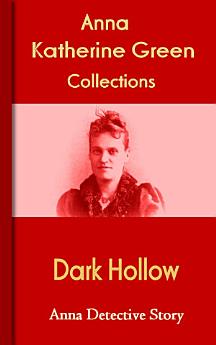Dark Hollow
About this ebook
I will tell you.
This fence is no ordinary fence, and this gate no ordinary gate; nor is the fact of the latter standing a trifle open, one to be lightly regarded or taken an inconsiderate advantage of. For this is Judge Ostrander's place, and any one who knows Shelby or the gossip of its suburbs, knows that this house of his has not opened its doors to any outsider, man or woman, for over a dozen years; nor have his gates—in saying which, I include the great one in front—been seen in all that time to gape at any one's instance or to stand unclosed to public intrusion, no, not for a moment. The seclusion sought was absolute. The men and women who passed and repassed this corner many times a day were as ignorant as the townspeople in general of what lay behind the grey, monotonous exterior of the weather-beaten boards they so frequently brushed against. The house was there, of course,—they all knew the house, or did once—but there were rumours (no one ever knew how they originated) of another fence, a second barrier, standing a few feet inside the first and similar to it in all respects, even to the gates which corresponded exactly with these outer and visible ones and probably were just as fully provided with bolts and bars.
To be sure, these were reports rather than acknowledged facts, but the possibility of their truth roused endless wonder and gave to the eccentricities of this well-known man a mysterious significance which lost little or nothing in the slow passage of years....
Ratings and reviews
About the author
Anna Katharine Green (November 11, 1846 – April 11, 1935) was an American poet and novelist. She was one of the first writers of detective fiction in America and distinguished herself by writing well plotted, legally accurate stories. Green has been called "the mother of the detective novel."
She was born in Brooklyn, New York on November 11, 1846.
Green had an early ambition to write romantic verse, and she corresponded with Ralph Waldo Emerson. When her poetry failed to gain recognition, she produced her first and best known novel, The Leavenworth Case (1878), praised by Wilkie Collins, and the hit of the year. She became a bestselling author, eventually publishing about 40 books.
Ellen Higgins, professor of a course on women and detective fiction at the University at Albany, delivered a talk on "The Female Rivals of Sherlock Holmes" at an international conference on Sherlock Holmes at Bennington College in 1994 with a paper that offered a revisionist feminist view of Sherlock. Higgins chronicled the work of Green, who published The Leavenworth Case, which became a best-seller a decade before Arthur Conan Doyle brought out his first Holmes story. "I only found out afterward that some people were a little upset with it because they don't want to hear about women competing with the master," Higgins said.
Green is credited with shaping detective fiction into its classic form, and developing the series detective. Her main character was detective Ebenezer Gryce of the New York Metropolitan Police Force, but in three novels he is assisted by the nosy society spinster Amelia Butterworth, the prototype for Miss Marple, Miss Silver and other creations. She also invented the 'girl detective': in the character of Violet Strange, a debutante with a secret life as a sleuth. Indeed, as journalist Kathy Hickman writes, Green "stamped the mystery genre with the distinctive features that would influence writers from Agatha Christie and Conan Doyle to contemporary authors of suspenseful "whodunits." In addition to creating elderly spinster and young female sleuths, Green's innovative plot devices included dead bodies in libraries, newspaper clippings as "clews," the coroner's inquest, and expert witnesses. Yale Law School once used her books to demonstrate how damaging it can be to rely on circumstantial evidence. Written in 1878, her first book, The Leavenworth Case: A Lawyer's Story, sparked a debate in the Pennsylvania Senate over whether the book could "really have been written by a woman."
Green was in some ways a progressive woman for her time—succeeding in a genre dominated by male writers—but she did not approve of many of her feminist contemporaries, and she was opposed to women's suffrage.
On November 25, 1884, Green married the actor and stove designer, and later noted furniture maker, Charles Rohlfs, who was seven years her junior.
Rohlfs toured in a dramatization of Green's The Leavenworth Case. After his theater career faltered, he became a furniture maker in 1897, and Green collaborated with him on some of his designs.
They had one daughter, Rosamund, and two sons: Roland Rohlfs and Sterling Rohlfs, who were test pilots.
Green died on April 11, 1935 in Buffalo, New York, at the age of 88.









